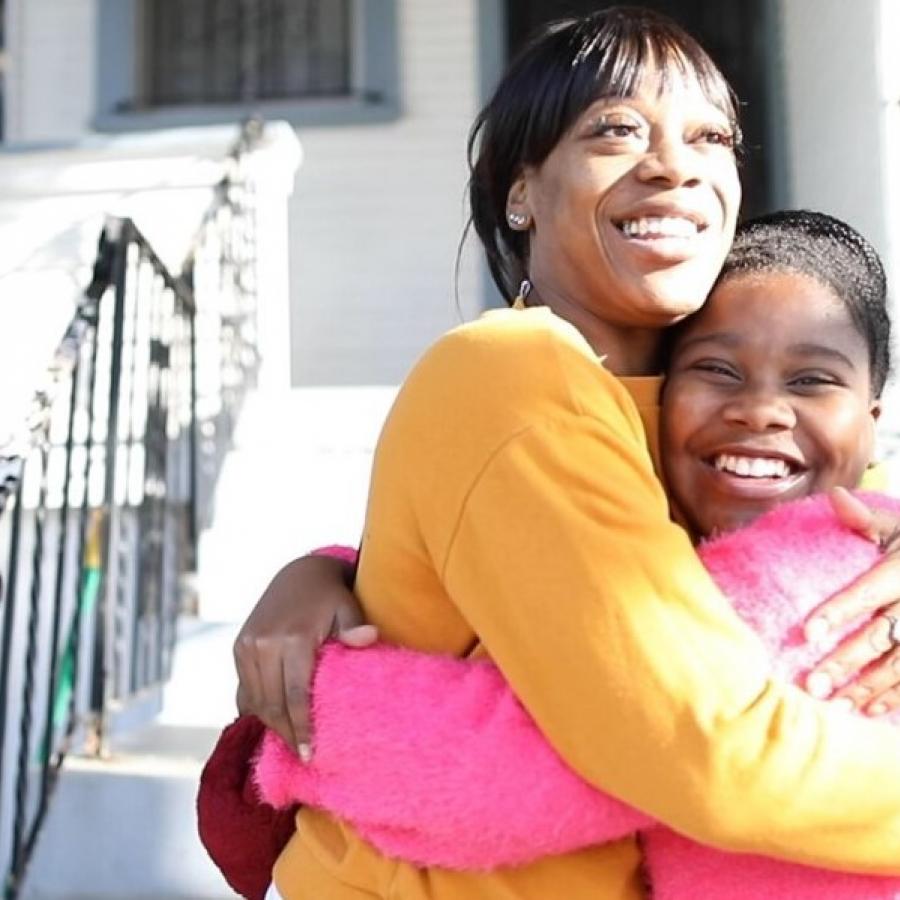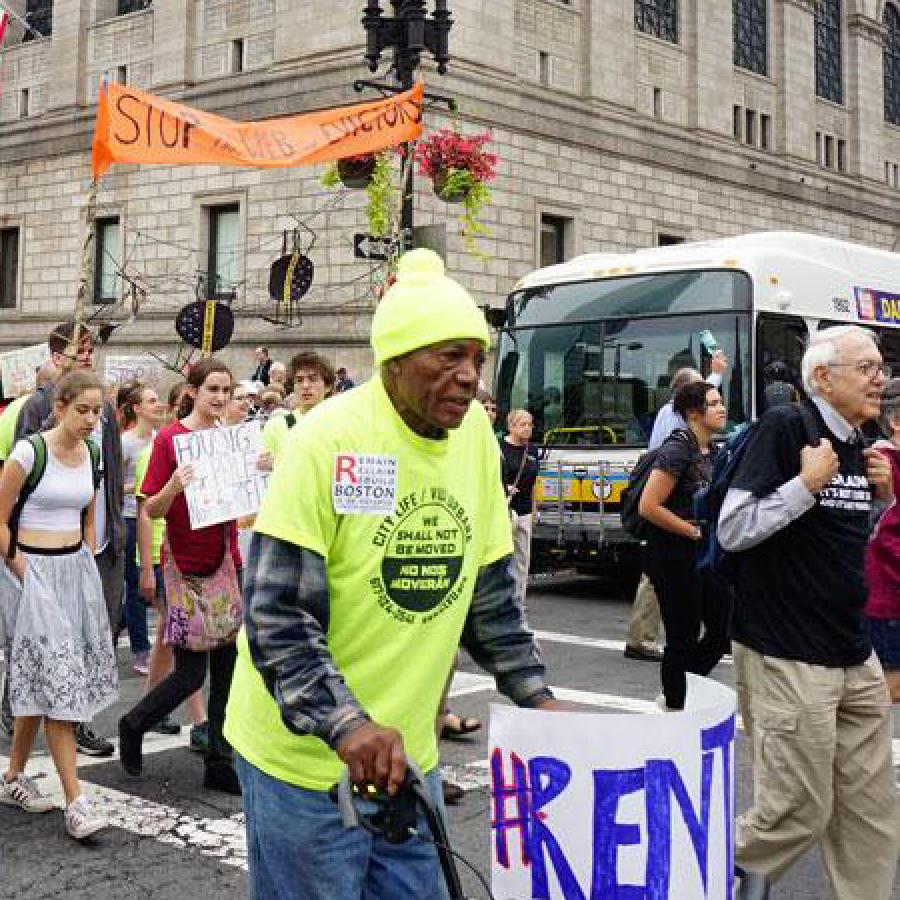Narrative Change in a Shifting Political Landscape: The Ambassadors for Health Equity Focus on Building a Culture of Health
Cultural narratives are powerful, often underutilized tools for promoting policy change. Especially in today’s shifting political landscape — where fear, anger, and xenophobia have taken root in the public discourse — the story of who we are and what we value as a nation has never been more important.
That is why narrative change has become a central theme in the work of the Ambassadors for Health Equity, a year-long fellowship of 13 national leaders from the private and social sectors who have worked together to foster environments where everyone — regardless of race, neighborhood, or financial status — has the opportunity for health and well-being.
A joint venture of PolicyLink and FSG, funded by the Robert Wood Johnson Foundation (RWJF), this fellowship creates a platform for leaders from outside the health field to share ideas and experiences, forge new alliances, and collaborate around promoting health equity in their work. Guided by three health equity experts, the fellowship included five in-person meetings, a series of webinars, and ongoing remote engagement around pressing topics in health equity.
The power of narrative has been at the forefront of the ambassadors’ work since the fellowship’s launch when ambassador, author, and executive director of the Institute for Diversity in the Arts, Jeff Chang presented on the importance of art and culture in promoting policy change.
“We can’t understand the social movements of recent years — Occupy Wall Street, Black Lives Matter — without understanding the power of culture,” Chang said at the July 2016 launch meeting in Oakland, CA. “Culture is where we can introduce ideas, attach emotions to concrete change, and foster enthusiasm for our values…culture is where we change the narrative.”
As the year progressed, the need for counter-narratives within an increasingly contentious political climate brought new urgency to this work, and the ambassadors sought to deepen their knowledge and share their own experiences of using storytelling to advocate for low-income communities and communities of color both locally and nationally.
What follows are some of the insights and best practices that have emerged from the many discussions around narrative change that took place throughout the Ambassadors for Health Equity fellowship.
Narrative Change in the Field
Narrative change is a slow, culturally-embedded process, and the results — a shift in public consciousness and public policy — can take years, if not a generation to appear.
“In some ways, in doing the work of narrative change we’re running a relay marathon that we won’t see the finish line of, but our children and grandchildren will,” Michael Skolnik, ambassador, entrepreneur, and CEO of creative agency SOZE, said during the May 2017 fellowship meeting in New York, NY. “It can be challenging to make the case for the need for narrative work when it’s so difficult to quantify.”
This challenge makes examples from the field a powerful tool for communicating the potential of narrative work. At the May meeting, Skolnik shared a case study from activists and artists in Ferguson, MO, who used street art to send a powerful message of solidarity and hope to the community and the national media covering the protests.
In the fall of 2014, as America waited to hear if officer Darren Wilson would be indicted for the lethal shooting of unarmed Black youth, Michael Brown, tensions were running high in Ferguson. Along the two-block stretch of West Florissant Avenue where demonstrations had continued for weeks, shopkeepers had boarded up entire storefronts in preparation for the protests that might ensue following the grand jury’s decision.
With the press swamping protests for weeks, local artist and activist Damon Davis saw an opportunity in the boarded-up storefronts.
“It was a stage where the whole world was watching,” Skolnik said. “These boards would become a canvas for communicating with news cameras, and by extension, to America.”
Working with community members, Danny Glover and Harry Belafonte, Skolnik helped secure funding from the W.K. Kellogg Foundation to support the activists and Davis’ art project. Davis photographed the backs of the hands of people of all ages and races, papering the storefronts (with the owners’ permission) with larger-than-life black and white prints. The images evoked the “hands up, don’t shoot” gesture, which had become a symbol of outrage over the shooting of unarmed Black youth, but also suggested solidarity and hope, the artist said.
The art received widespread, national media coverage almost immediately upon installation, and was noted as “the most powerful street art in America” at the time.
“The fight with narrative work is to lift up the voices of those directly impacted, and build compassion to open up the heart,” Skolnik said. “This project moved people across America.”
Shaping the Message, Finding the Messenger
In a charged political climate, shifting the narrative on a contentious issue isn’t just about communicating an argument; it’s about building empathy and finding avenues for human connection.
This was the overwhelming takeaway from political strategist Marc Solomon’s work on the Freedom to Marry campaign, which helped activists win marriage equality nationwide in 2015. Sharing his experience with the Ambassadors during a May webinar, Solomon recounted a turning point in their campaign that forced them to re-envision how they talked about gay rights.
“For years we'd been focusing on raising awareness of how gay couples were excluded from rights and benefits, but it wasn't moving the needle; we realized we’d lost touch with the core reason why most gay couples wanted to get married in the first place: to show love and commitment to their partners,” Solomon said.
Solomon and colleagues revamped their advocacy campaign to tap into the shared humanity of issue, highlighting the fact that “gay people shared the same hopes, dreams, fears, and aspirations as straight people,” Solomon said.
Instead of using celebrities or politicians in their campaign, they selected messengers that would speak to these priorities. They enlisted friends and family members who had moved from disapproval to acceptance when they discovered their loved one was gay, using them as spokespeople for commercial, ads, and congressional testimony.
“We wanted to take people who were conflicted on the issue on a journey that allowed for the fact that it was okay to be conflicted, and yet showed them people they could relate to who had journeyed to a place of support,” Solomon added.
This human connection piece is especially important in the realm of health equity work, where the sites of intervention — the need for healthy food, quality healthcare, and safe housing, for example — are both deeply personal and universal.
“People can see themselves in work to promote health, improve education, and help the environment,” Tynesia Boyea-Robinson, ambassador and president and CEO of Reliance Methods said at the May 2017 meeting. “There is less othering because everyone has had a sick family member, everyone wants clean air and good schools for their kids.”
Forging New Conversations in Health Equity
When we talk about narrative change, we are ultimately talking about a cultural shift — a fundamental change in the dominant views, values, and eventually policies.
Advancing a health equity agenda within today’s tumultuous political climate will require advocates to build on the creativity and compassion showcased by the examples above, and push the narrative further through new partners, messengers, and platforms for discussion, debate, and dissemination.
That is why the Robert Wood Johnson Foundation has focused on building a Culture of Health, in part through cross-sector initiatives like the Ambassadors for Health Equity that bring together new allies from outside the health sector and gives them the tools to promote health equity within their own work.
“In my field of criminal justice, we’re extremely siloed,” said James Bell, ambassador and founder & president of the W. Haywood Burns Institute. “These meetings have helped me get the language and educate others about the connections between criminal justice and other sectors like health, education, and housing.”
In this way, the work of narrative change begins with the conversations that transpire between colleagues, opponents, and community members.
“We need to be able to see the humanity in each other, even when we disagree,” Sarah Kastelic, ambassador & executive director at the National Indian Child Welfare Association said at the May 2017 meeting. “If we’re going to have the conversations we need to have, we need to build relationships that are durable enough to make mistakes.”
She added, “We must be vulnerable enough to say things and know we may not get it right at first, and compassionate enough to listen and help our opponents get it right.”


